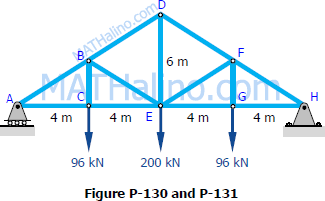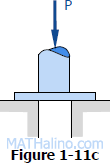Solution to Problem 270 Thermal Stress
Problem 270
A bronze sleeve is slipped over a steel bolt and held in place by a nut that is turned to produce an initial stress of 2000 psi in the bronze. For the steel bolt, A = 0.75 in2, E = 29 × 106 psi, and α = 6.5 × 10-6 in/(in·°F). For the bronze sleeve, A = 1.5 in2, E = 12 × 106 psi and α = 10.5 × 10-6 in/(in·°F). After a temperature rise of 100°F, find the final stress in each material.
- Read more about Solution to Problem 270 Thermal Stress
- Log in to post comments




